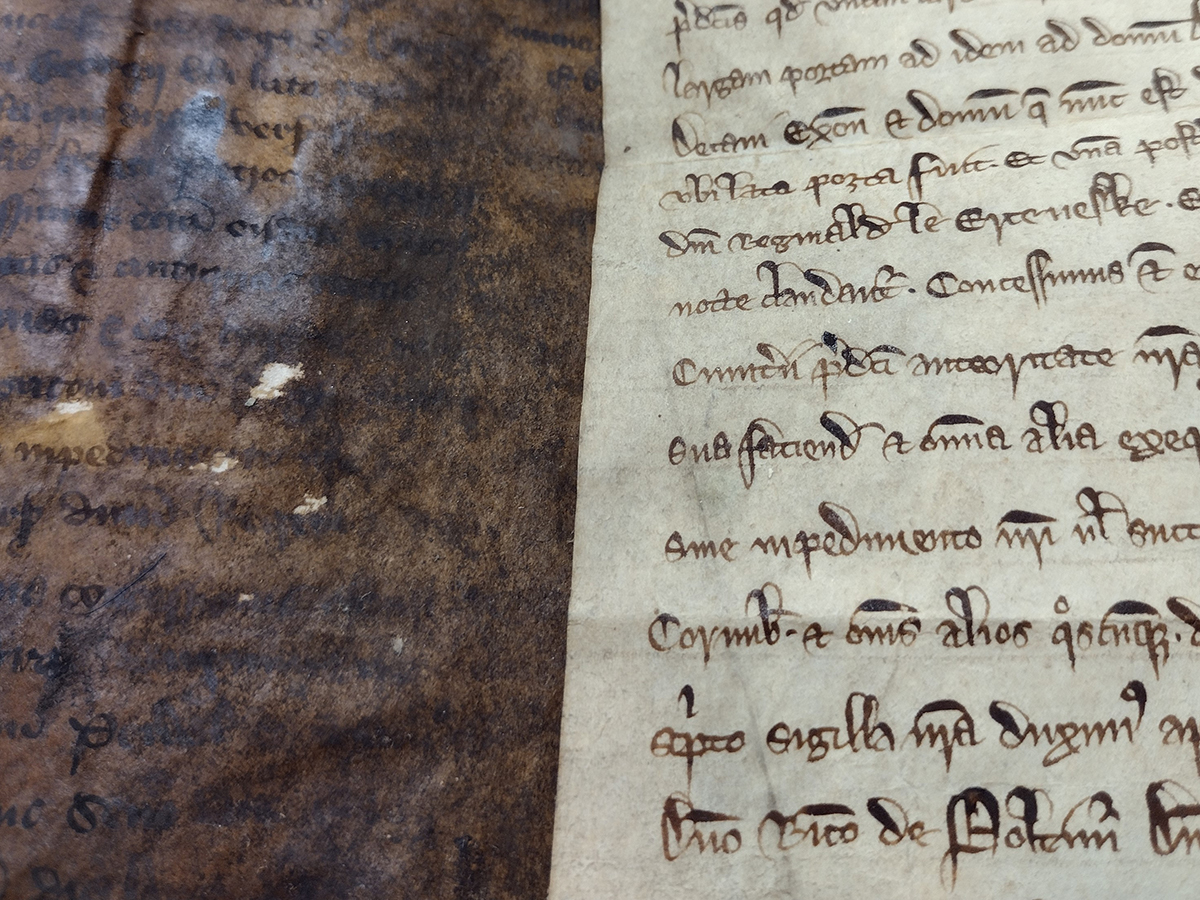
by Ellie Jones, Cathedral Archivist
In 1286, following the murder – three years earlier – of the Cathedral’s Precentor, Walter Lechlade, an agreement was drawn up to enclose and protect the Cathedral churchyard with a high wall, erecting gates at key points around it. Bishop Peter Quinil and the Dean & Chapter issued a document to the Mayor and citizens of Exeter describing the position and width of the gates, and the terms and conditions for when they should be opened and locked. The gates were to include one wide gate for carts in St Martin’s Lane, a wide gate at the house of the Archdeacon of Exeter, and a gate eight feet wide for packhorses in the lane between the Deanery and Roger de Derteford’s house.
Two copies of this important document survive in the Cathedral Archives. Thankfully, one copy is still as clear as the day it was issued – the parchment is clean and bright, and the text is dark and clearly legible. The second copy, however, has fared very badly. It has been “completely defaced by galls”, a depressing term which appears in catalogue descriptions of documents from time to time, and accurately describes what has happened here.
Most medieval inks depend on a chemical reaction between two of their main ingredients: iron sulphate (known as green vitriol) and gallic acid (derived from oak galls). When mixed together, an oxidation reaction produces iron gallate, which gives the ink its colour. At first it is dark grey, but eventually it turns deep brown. Sometimes poor quality inks or water damage might cause text to fade, and a new solution, including gallic acid, was sometimes applied in the past to recover the text. This has the temporary effect of deepening the colour of the ink so it can be read once more. Unfortunately, the chemical reaction continues to develop, and eventually the underlying text can be obliterated, as has happened here. Fortunately this is not done any more, and we can instead make use of digital imaging techniques to enhance faded text, doing no harm to the original document in the process.